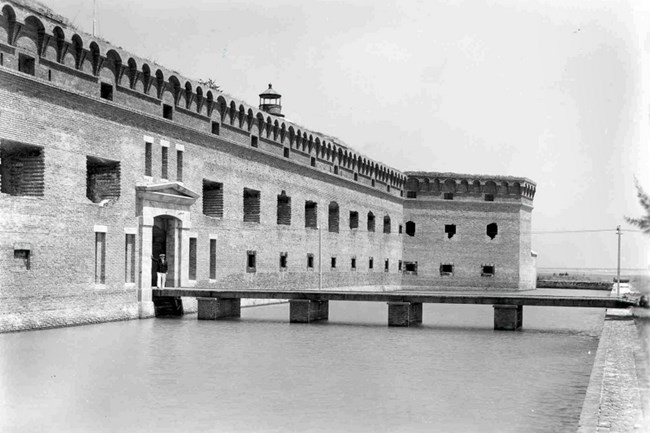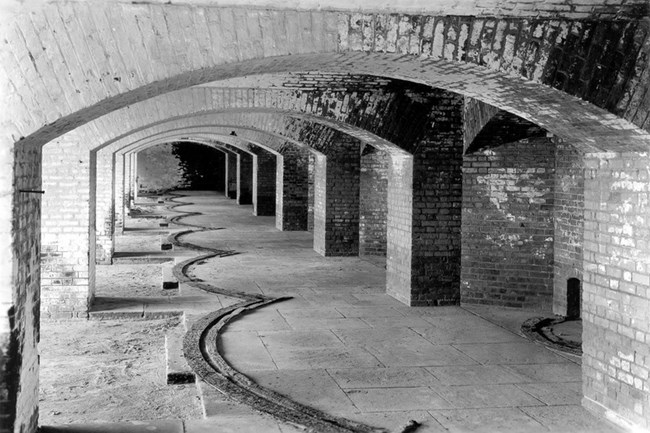
NPS Photo Fort Jefferson was built to protect one of the most strategic deepwater anchorages in North America.

NPS Photo A Powerful DeterrentPoised to protect this valuable harbor was one of the largest forts ever built. Nearly thirty years in the making (1846-1875), Fort Jefferson was never finished nor fully armed. Yet it was a vital link in a chain of coastal forts that stretched from Maine to California. Fort Jefferson, the most sophisticated of these, was a brilliant and undeniable symbol that the United States wanted to be left alone. Though never attacked, the fort fulfilled its intended role. It helped to protect the peace and prosperity of a young nation. |
Last updated: February 24, 2025
